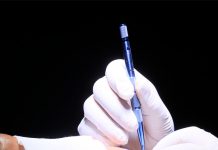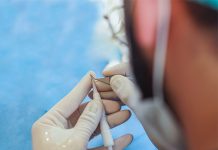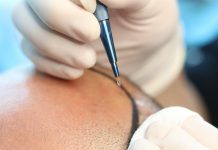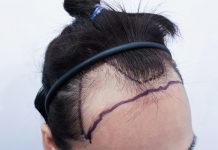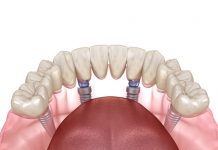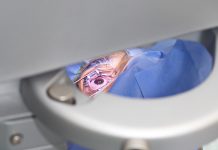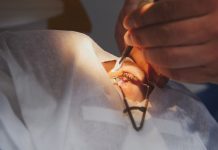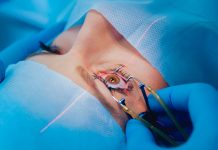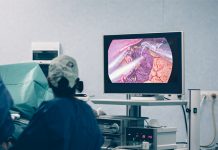LASEK Eye Surgery
LASEK Eye Surgery in Turkey, its average cost, LASEK Eye surgery procedure and everything you should know about correcting refractive issues are explained.
LASEK (Laser-Assisted Epithelial Keratomileusis) is a sort of an alternative to LASIK eye surgery. It is a very popular form of eye treatment among other treatments. LASEK eye surgery cost is between £1,000 and £2,500, yet it might change in accordance with your region, your country, your clinic, and the doctor that is currently treating you. Being experienced, especially, is very important when it comes to eye operations and treatments. The more experienced your surgeon, the more guaranteed your results, and higher is the price you are required to pay.
Eye health is one of our most crucial necessities. In such an era where technology and 7/24 online availability is so important, electronic devices have become an indispensable part of our lives. Amidst the chaos COVID-19 created and among all uncertainties, we have become more attached to our phones and computers more than ever. A majority of students have to take online classes in order to excel in them whereas also a majority of the working population has to be present in online meetings and has to be active in their online tasks regarding their occupation. In such a scenario, people grow more sedentary day by day. It does not end with turning us into sedentary individuals.
Our eyes carry the weight that our body doesn’t. We have to tire them out more than ever during our stay-home periods and most of us, unfortunately, are not really able to realise that we are spending more time in front of our screens out of boredom or due to other reasons. Therefore, we are naturally missing a huge blind spot: The harmful blue rays that our devices give off. They are capable of deteriorating the overall health of our eyes whether by rendering their vision impaired or by making the already-impaired vision worse than ever.
If you have myopia, for instance, wearing out your eyes might result in your myopia degree getting higher. If you are not paying enough attention to wearing your protective glasses or if you do not have any protecting layer on them, your condition will most possibly gradually go worse. Thankfully, with all the advancements in the eye health industry, you can get rid of these problems for good and all. LASEK eye surgery treatment is one of those miraculous advancements. You can tap into the benefits of LASEK with the right treatment plan and with the right choice of a doctor and a clinic.
General Features of LASEK Eye Surgery
LASEK (Laser-Assisted Epithelial Keratomileusis) is preferred for treating refractive eye problems such as myopia (also known as short sight among people), hyperopia (long sight) and astigmatism. It is one of the safest techniques of corrective laser treatments. People who cannot undergo LASIK can opt for LASEK.
The main principle of LASEK eye surgery involves using a type of laser beam specially and specifically designed for changing the shape of one’s cornea. This special laser is known as “Excimer Laser” and it was invented around 1970’s. Excimer laser technology has been used for many years and it is one of the most preferred laser technologies. It keeps getting advanced and improved day by day thanks to the technology. It has been an extremely safe method and now, it is even safer.
The cornea is the eye’s outermost member and it functions as some sort of a lens. Thanks to this clear outer lens, the light beams are able to focus on the required place when they enter the eye.
The cornea is a vital member of our eyes due to the fact that it makes up approximately 65-75% of our eye’s ability to focus light. When the light beams enter our eyes, they immediately strike the cornea first so the light bends or refracts. Irregularities or other issues regarding the shape of your cornea result in impaired vision cases like astigmatism, myopia, or hyperopia. In those impaired visions, the light rays end up being fractioned incorrectly and they focus elsewhere. This makes some people unable to perceive nearby or further objects correctly. With LASEK, these are completely treatable.
Putting LASEK in a nutshell, it aims to expose your cornea to laser beams. This is achieved by softening the epithelium first. Softening of the epithelium is achieved with a diluted alcohol solution. When epithelium reaches an appropriate state, it is smoothly moved aside. Once the epithelium gets out of the way, the cornea becomes completely open and susceptible so it is easier to get it exposed to the laser. This technology requires no blades and no incisions. Therefore it opens the way for a quicker treatment and the discomfort of the patients is considerably reduced. The fact that no blades required makes it a much safer and riskless operation.
Main Benefits of LASEK Treatment
Just like other operations conducted with laser like LASIK or PRK, LASEK eye surgery has also several benefits. Some of those benefits are as below:
- The procedure is rather quick as well as being almost It approximately takes 5 minutes or less for each eye.
- Patients report that their vision gets better within a few days. Hence, LASEK provides excellent results.
- Research has shown that 97% of the patients who undergo LASEK eye surgery frequently report achieving their desired vision within a very short span of time. It supports the fact that LASEK eye surgery provides high satisfaction rates thanks to its clinically proven methods.
- During LASEK eye surgery, your doctor will not create a flap. This means that people with dry eyes, thin corneas or people who engage in close contact sports can consult to LASEK technique with their minds at peace.
- Since your doctor does not create a flap by cutting, the risk of getting complications is less likely.
- It causes less dry eye cases than LASIK treatment.
- The patients experience a very comfortable procedure with minimal touch involved.
- Patients do not require stitches after the procedure.
- If your vision gets worse again with time or if you need further treatment in order to correct highly dysfunctional refractive issues, these adjustments can be made in the future. You just need to wait for a certain period until you undergo a second operation.
Main Disadvantages of LASEK
- Patients need more time in order to fully heal in terms of their visual abilities than LASIK. Many LASEK patients have reported that they have found it difficult to fully recover for 1 or 2 weeks. LASIK patients’ vision gets better day by day right after the surgery.
- LASEK eye surgery might cause more pain when compared to LASIK; however it is indeed just the feeling of discomfort. Nevertheless, LASEK eye surgery is also less painful when you compare it with PRK laser treatment. Many LASEK patients reported that they have experienced discomfort only for 1 or 2 days.
- After LASEK eye surgery, patients need to wear bandage contact lenses for 3-4 days only to be removed by the medical staff. This bandage contact functions as a protective layer between your blinking eyelids and the treated area. In LASIK, however, patients are not given such thing as a bandage contact.
- The topical steroids you need to use are required for several more weeks than it is for LASIK eye treatment.
The Difference between LASEK and LASIK
People can very often find themselves confused while trying to comprehend the main differences between LASEK and LASIK. Since the names of the surgeries are also similar, this might create further confusion. In order to understand the main differences between them, one must also know how LASIK operates, as well as LASEK eye surgery treatment.
LASIK stands for “Laser-Assisted In-Situ Keratomileusis”. During LASIK, a very thin flap is created on the cornea with the first beam of laser and it is gently lifted. The second laser beam is used to penetrate deeper into the cornea and to correct the refractive errors. Both eyes can be treated on the same day in most cases.
In LASIK however, that protective tissue on the cornea is softened by diluted alcohol and moved aside with the help of a very thin sheet. After that, your surgeon is able to reach deeper into the cornea again. As it can be seen, the main difference is how your cornea is being opened by lifting the epithelial tissue. This depends on the characteristics of your cornea. If your cornea is thick enough, LASIK is suitable for you. In cases when the patients’ corneas are too thin or fragile, LASEK eye surgery is the preferred method and is a safer alternative to LASIK. Only a medical can tell you which is suitable for you. This is mainly determined by making corneal examinations only.
How to Tell If LASEK is Applicable for Me
LASEK eye surgery treatment is less invasive and riskless than LASIK. However, it does not mean that LASIK is risky and not safe. LASIK is a completely safe treatment, LASEK eye surgery is even safer. LASIK is not just for everyone but LASEK eye surgery can apply to many as mentioned below. Those who;
- have an extremely thin or steep cornea, which makes it difficult for surgeons to create the epithelial flap.
- take place in professional or amateur physical and leisure activities (sports, martial arts, swimming, etc.) which put their eyes at the risk of getting injured in some way.
- are suffering from dry eye syndrome.
- are suffering from astigmatism, myopia, or hyperopia.
Where to Start?
As it is for all types of operations and surgeries, LASEK eye surgery requires some steps towards preparation, too. You can find those steps below so that you are not confused and mislead during your journey for a better vision.
Initial Consultation Appointment
In order to begin your treatment process, you need to find a clinic and book an initial consultation appointment. Finding and trusting in a clinic might be especially hard nowadays. You may not be quite sure regarding the sanitary condition and the sterilisation of a clinic during the pandemic. In addition to this, it might be upsettingly difficult to find a trustworthy clinic among all this information pollution on the Internet. You can consider searching your selected clinic on different social media platforms.
Comments of the previous patients might as well shed light on your confused feelings and judgments. Some clinics prefer representing themselves with Internet advertisements. It is very likely that you will come across those clinics in the first rows of your search list. You must always keep in mind that just because they are advertised does not mean they are proficient in this area and they are totally safe and trustworthy. You can try getting in contact with their previous patients, as well, if the clinic has posted their results or experiences on their social media before.
Once you decide on a certain clinic, you should take your steps further and book your first appointment. If you want to ensure that your results are perfect in the long term, you should pay attention to your evaluation process. Patients who are meticulously evaluated tend to get the best results from the operation. Your doctor will evaluate the general state of your eyes and your vision. They might also demand:
- Your full medical account.
- Your surgical history.
- The medications or the topical eye drops you are currently using.
- Your vision history and the degree of your impaired vision, if you are suffering from one.
- Any chronic illnesses you have.
Your surgeon will examine your eyes by themselves, as well. They are most probably going to look for some signs of eye infections, inflammation, dry eyes, abnormally large eye pupils, high eye pressure (glaucoma), and other eye conditions that might threaten your surgery and your recovery, as well. They are also going to measure the features of your cornea like its shape, contour, thickness, or any possible abnormalities. This will help your surgeon to determine whether you can take this treatment or not as well as creating a personalised treatment plan specific to the needs of your cornea. By doing so, they can also calculate and identify the exact amount of tissue to be removed from your cornea.
Since contact lenses are also able to change the shape of your cornea, you are going to be asked not to wear them and to use glasses instead at least a week prior to your examination and the surgery. The staff in your doctor’s office will provide detailed guidelines for you so you will know about your precise situation and for how long you should not wear your contact lenses.
Before and During the LASEK Eye Surgery
LASEK eye surgery has to be performed in sterile conditions like all other operations. However, just like the sterility of the environment, your eyes also have to be clean. You should pay attention to:
- Not having any eye cream, make up or cosmetic lenses on your eyes.
- Keeping the area around your eyes as clean as possible.
- Informing your doctor about the recent uncomfortable sensations on your eyes if you experience such thing.
- Not to wearing contact lenses for a while before and after the surgery. It is required in order not to get your cornea’s shape changed or disrupted. Your doctor will inform you further on this issue during your consultation appointment if they find you eligible to take the treatment. You can still wear your glasses when you are told not to wear contact lenses. You are not going to need both of them again, anyways.
- In addition to those recommendations, you are expected to do exactly as your surgeon says and strictly follow the instruction. These precautions and instructions are for you, so you can go through your recovery with little or no problems, at all.
If the operational area is completely sterile, your surgeon will take you into the operation right away. The procedure is completely painless yet, if you have issues with not being comfortable enough, you can demand from your surgeon some relaxing medications. After this step, you will be asked to lie down on some sort of a table or on an inclined chair. A special apparatus will be placed under your eyes in order not to let the solutions out.
First thing first, a topical anaesthetic will be dropped in your eye. This is going to numb the area so that you will not feel any discomfort. After this step, when your eye area is completely numbed, the diluted alcohol solution will be applied on the eye that is being operated on. This solution, as mentioned before, will help to smooth the outer surface of your cornea and at the end, the epithelium will be easily separated to be folded aside. Therefore, the structural collagen of your cornea will be able to be reshaped with the help of this excimer laser technique. You might feel a little pressure on your eye during the procedure; most of the patients report such a feeling although it is completely painless. However, you might also feel nothing at all as some patients report.
As the laser is being applied, you will be asked to stare at a certain target in order to fix your eye. This step (applying the laser to the cornea after separating epithelium) will take 30 seconds. With every pulse of the laser, a small piece from your cornea will be removed. If you need additional treatments such as astigmatic laser treatment, etc. your doctor will wait for a short span of time right after the laser application is done. Depending on the rate of correction your eye needs, this step might take an additional time of 15 seconds.
After your doctor is done with applying the laser, the surface cells (mentioned earlier as “the epithelium”) are going to be repositioned back into their supposed place. Some sort of a bandage contact will also be placed on the eye in order to prevent the surface from being damaged in various ways during the recovery phase. Unlike other laser treatments, if you are a patient who needs LASEK eye surgery in both eyes, you can get them both treated on the same day. During the operation, you do not even have to worry about moving your eyes and getting your eyes hurt by the laser. The laser is meticulously programmed to follow your eyes’ movements and to stop immediately if ever you move them.
After the Procedure
It is highly recommended that you bring a relative or a close friend with you to be your company after the LASEK eye surgery treatment. Your doctor will provide you detailed information on your aftercare and medications but you need someone with you to get you back home. Your doctor might prescribe eye drops, a variety of eye ointments that are going to be applied during the first days and some sleeping pills or pain killers to ensure that your sleep is not interfered throughout the night.
They may also give you anti-inflammatory eye drops to reduce your risk of infection or inflammation. You are generally expected to use those types of eye drops for the first 4 weeks, yet you might also need some lubrication drops. This situation may also require a few months.
As mentioned earlier in the previous section, your surgeon will provide you with a bandage lens right after the surgery and they will implement the lens on your eye. Those are simply disposable contact lenses. They will make you capable of seeing things in a clearer way as well as encouraging the tissues to heal at a faster rate. Under all circumstances, you should avoid trying to get these off by yourself. They are meant to be taken off by the medical staff three to five days following the procedure.
In your first days following the procedure, the surface of your eye will be busy healing and bringing your vision back as clearer. Your vision will not completely go away after the procedure; you will be able to see things and your environment. Your vision will improve further with time. However, it might take a while once your sight gets completely stabilised. It might take between one and three months for eyes to completely heal and therefore have a stabilised vision. Nevertheless, this does not mean that you will not catch up with the life. You will most probably be able to drive the next day, in some cases even right after the surgery. You just need to be careful.
Every patient’s experience is unique. As is the case with all other treatments and surgeries, your visit to your doctor’s office for the surgery will be followed by your other visits. These are called “follow-up visits” and their main goal is to ensure that you are fulfilled and satisfied with your results. Your follow-up appointment will take place one or two days after the surgery. Your doctor and the staff will check the flap, its condition and they will check the area lest any unexpected complications should occur.
Within and during the following 6 months, you and your doctor will plan other follow-up appointments. Those meetings will be decided upon as your doctor recommends and in accordance with your general situation. It is not really recommended to use cosmetic products such as creams, eye shadows, eyeliners, mascaras, or make-up removing waters on your eyes at least for a few weeks. Intensive physical activities and swimming sessions should also wait for several weeks in order to be performed.
Possible Side Effects of LASEK Eye Surgery
LASEK eye surgery has a very low rate of side effect and complication incidences. The possibility of those occurrences is nearly zero yet, as with all procedures, they might occur. Those possible risks and complications will be conveyed to you on the consent form. You will be asked to sign it before the procedure. If any of those side effects occur, they are expected to vanish gradually during your healing phase. They rarely persist and in those cases you are more than welcome to consult to your doctor. Some of those side effects are as below:
- Dry eyes: Any patient who has undergone LASEK eye surgery might expect to have dry eyes for a certain period. This is completely normal; you may feel that gritty and sandy feeling on your eyes after the procedure. Nonetheless, you do not really have to worry about it since your doctor will most probably prescribe eye lubricants for you. As long as you use those eye drops in time and regularly, this side effect is not going to bother you and refrain you from conducting your daily routine. After the first 1-3 months, your eye dryness will permanently go away.
- Night glare: You may experience this as a consequence of both bright and dim lights. You might find your eyes being squinty and teary when you are trying to see things under a light too bright. In the dim light, however, you might also find that your vision is impaired due to a reduction in the contrast of the images and objects around you.
- Halos: This is also as common as night glares. Halos and night glares are expected to go away on their own during the first month.
- Light sensitivity: Most of the patients report being a little sensitive to light immediately after the surgery.
- Minor uneasiness: Once the procedure is completely done, your eyes will start feeling a little uncomfortable. It might start at any point between the 30th and the 45th minute after the surgery. It will only last a few hours and after this, you will have already experienced the biggest side effect of LASEK eye surgery. That sensation is actually remarks the beginning of your initial healing process. It is the worst part of LASEK recovery and once you get over this period of 3-4 hours, you will feel much comfortable during your recovery.
- Itchy eyes: Just like light sensitivity, minor discomfort and dry eyes, feeling an itchy sensation is completely normal, as well. The biggest cause behind this is because your eyes are feeling dry, as mentioned earlier. This might take a few days to completely go away. Preservative-free artificial eye drops (or tears) will help relieving this sensation. These drops work in the same logic as lubricant eye drops. It is recommended that you keep them in the fridge since cooled tears cause an extra soothing sensation.
- Sensation of a foreign, out of place object in the eye: This is temporary, too and only lasts between 1 and 4 days.
- Hazy or cloudy vision: This should disappear within 6 to 9 months.
Possible Complications You Might Experience After LASEK Treatment
As it is possible to happen after every surgery, you might suffer from some complications after LASEK eye surgery, as well. These are not really likely to happen but they are still within the range of possibilities. You may experience the things as below after LASEK:
- Infections: If the area the surgery is performed is not sterile enough or if your eye is not as hygienic as it needs to be, you might be have to handle some complications like this one. It is not really life or vision threatening, yet they are still the risks that might emerge if left untreated. If you feel like you caught an infection, you must immediately call your doctor and visit the clinic without hesitation. If you stay loyal to your follow-up appointments, these problems are to be detected earlier before they get worse over time. Your doctor will be able to treat the infection with special antibiotics and ointment. Never use antibiotics or eye drops on your own and without consulting to your doctor. This might leave you blind or make the situation go even worse.
- Inflammations: Just like possible infections, this can also be treated with the right medicines and ointments.
- If you experience a sudden decrease in your vision, bizarre discharges coming out from your eyes and extremely red or painful eyes, contact or visit your doctor Do not ever postpone.
What Is LASEK Eye Surgery Exactly?
LASEK is an eye surgery conducted with the help of the excimer laser technology. Excimer lasers have a long history in our century starting from 1970’s. This laser type is being used in different eye surgeries such as LASIK and PRK as well as LASEK. Excimer laser is widely preferred due to its effectiveness in treating eye problems. Using lasers provide a more sterile surgery because of the minimal contact with the patient’s eye. In LASEK, the cornea is exposed to excimer laser after lifting the epithelial tissue with the help of a diluted alcohol solution. After that, the corneal tissue is reshaped with the help of the laser beams.
Am I Going To Feel Too Much Pain During LASEK Eye Surgery?
Most of the patients report feeling a little bit pressure on their eyes during LASEK. However, this is not necessarily painful. It can even be said that LASEK eye surgery is not painful at all during the application process. The main discomfort you will experience is after 30-45 minutes following the surgery. You might feel like there is a foreign object on your eyes as well as them being dry and itchy. Yet, these are completely temporary and treatable.
What Are the Other Alternatives of LASEK Eye Surgery?
Other than LASEK eye surgery, you can also opt for LASIK and PRK. Nonetheless, even if you want to choose between those options, the most suitable type of surgery for you can only be decided by a professional.
How Long Will LASEK Eye Surgery Take?
The total surgery time can change between 3 to 5 minutes for each eye. However, with modern state-of-the-art lasers and thanks to 3D technology, the surgery might take only 6 seconds of actual laser time. Do not let the word “laser” scare you: one pulse of excimer laser removes a quarter of a hundredth of a width of a human hair. It is the safes form of laser eye surgery.
What About the Healing Process? When Will I Completely Heal?
Patients who underwent the LASEK eye surgery procedure often experience a slower healing period than LASIK. It might also be a little bit more uncomfortable. Your eyes might feel like irritated and itchy during the first days. Also, the healing of your vision takes longer, as well. A typical LASEK patient experiences good vision between four and seven days whereas LASIK patients start healing and improving their vision immediately after the surgery.
Will I Feel Anything While the Surgery Is Being Performed?
LASEK eye surgery is totally comfortable and painless while you are in the surgery. Most of the patients just feel a very soft pressure on the eye that is being operated.
Is My Eye Going To Be Painful After the Operation? Will I Be Able To Endure?
LASEK’s main principle is treating the surface of your eye, which is cornea, indeed. Due to the fact that the outermost part of your eye is being treated, you might feel a little bit uncomfortable between the first 24-48 hours following the treatment. This is totally within the range of expectations and it can be handled with a few drops of analgesics. Your doctor might also prescribe them as drugs to be consumed orally.
What Am I Expected To Do in Recovery?
Your doctor will give you a set of eye drops. These eye drops include the ones that reduce the risk of inflammation and infection just in case they occur out of nowhere. You need to use them usually for a month or so but some of the patients might require additional eye lubricants. In addition to this, you are expected to show up in your follow up appointments. One of them is one or two days after the surgery. Your doctor will determine them as you proceed in recovery.
Can I Drive Home After the LASEK Eye Surgery?
It is highly recommended that you bring a relative or a close friend with you before the surgery. Unlike LASIK, your vision will take some time to be stabilised. Although you are not legally banned from driving the next day, it might take between one or three months until your vision is fully stabilised.
Can I Put Make Up on or Use My Eye Creams After the LASEK Eye Surgery?
It is recommended that you wait for a few weeks before you put make up on your eyes or use your eye creams. They might cause minor infections and you might not be able to realise them before they thrive and go worse. Your eyes will be sensitive to external factors and threats so it is best to protect them for a while.
Can I Swim or Go Back to My Routine in the Gym Right After the Procedure?
Since your eyes are going to be very sensitive to external factors following the period after surgery, swimming is not a good idea, at least for several weeks. It might disturb your corneal tissue. Going to gym or performing strenuous physical activities are not good ideas, as well. You might catch infections in the gym environment or your sweat might disturb your eyes. You should wait for several weeks before you engage in such activities, too.
What Are the Risks That I Should Be Aware Of?
The complications are rather rare but it does not mean they will not occur. There is no procedure that is completely free of risks. If you strictly follow your doctor’s advices and instructions, they will not possibly occur at all. However, you should watch for them for a while. If they proceed, it might leave you with miserable results and the lowest satisfaction, and even the utmost regrets. You must immediately contact or visit your doctor if you experience one of these:
- a sudden decrease in your vision.
- bizarre discharges coming out from your eyes.
- extremely red or painful eyes.
Other than these, you might experience dry eyes, halos, glares or double vision. However, these symptoms are common after the surgery and they will diminish on their own or with the right aftercare. Additionally, you might be under or over treated. Although most of the patients achieve 20/20 vision and do not need contacts or glasses again, nearly %3-%5 of the patients might need additional treatment once their vision is fully stabilised.
Will I Need My Glasses Again?
Only a very little part of the patients require glasses or contacts after the treatment. However, this is not very likely if you choose the right clinic as well as choosing the right doctor.
Will My Results be Permanent?
In some patients who suffer from long-sightedness, the achieved results might fade away with aging.


